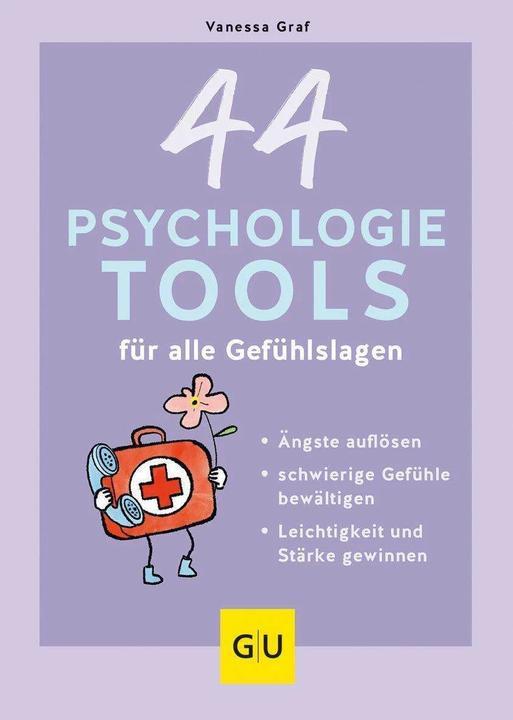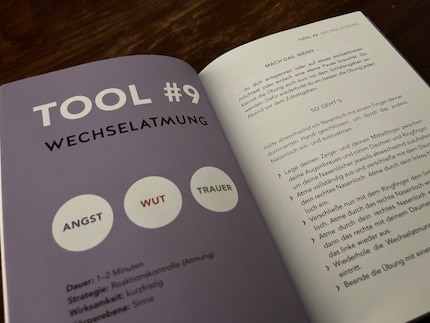

44 psychology tools: How to help yourself with anger, fear and sadness
Nobody wants them, everyone has them: negative emotions. This guide provides you with 44 exercises to help you overcome anger, fear and sadness and transform them into positive energy.
Want a little break? Then why not try tool #9 «Alternate breathing». Alternate between holding one nostril closed with a finger of your dominant hand and breathing in and out through the other nostril.
Have you tried it? And are you already feeling better? Then the «44 psychology tools for all emotional states» may well have even more helpful tools for you.

Bern psychologist and emotion expert Vanessa Graf has collected 44 such exercises from therapeutic practice in her book. From short, one- to two-minute focus exercises to half-hour «tools» for relaxation, you will find a whole range of ways to channel your emotional world into more pleasant channels.

Source: Anna Sandner
The book is clearly organised, the exercises are numbered and always structured according to the same pattern: You will find out in which emotional state the respective tools are best suited, how much time you should plan for them, which type of strategy is used (such as reaction control through breathing or cognitive reassessment through reflection), whether the tasks have a short or long-term effect and which body level you use for them. The guide is divided into five sections dedicated to the three big feelings that we all prefer to avoid: Anger, Fear and Grief.
Don't suppress unpleasant feelings, but learn to deal with them appropriately.
Graf opens up ways of admitting these «negative» feelings and growing from them at the same time. She explains the background and allows her readers to immerse themselves in the world of emotions in an easily understandable and technically sound way. She clarifies questions such as «Why do we have (negative) feelings at all?», «What is the difference between feelings, emotions and mood?» and «What happens in the brain during anxiety?». Much of it is not new and yet she manages to gently guide her readers through the world of emotions and at the same time shed light on the confusing world of emotions with understandable explanations of the psychological background.
Science editor and biologist. I love animals and am fascinated by plants, their abilities and everything you can do with them. That's why my favourite place is always the outdoors - somewhere in nature, preferably in my wild garden.
Practical solutions for everyday problems with technology, household hacks and much more.
Show all

